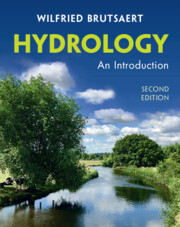Refine search
Actions for selected content:
36807 results in Cambridge Textbooks
4 - Marine Spaces under National Jurisdiction II: Sovereign Rights
- from Part I - The Divided Oceans: International Law Governing Jurisdictional Zones
-
- Book:
- The International Law of the Sea
- Published online:
- 14 February 2023
- Print publication:
- 02 March 2023, pp 154-200
-
- Chapter
- Export citation
Contents
-
- Book:
- An Introduction to Genetic Engineering
- Published online:
- 10 February 2023
- Print publication:
- 02 March 2023, pp v-vi
-
- Chapter
- Export citation
Chapter 5 - The Tools of the Trade
- from Part 2 - The Basis of Genetic Engineering
-
- Book:
- An Introduction to Genetic Engineering
- Published online:
- 10 February 2023
- Print publication:
- 02 March 2023, pp 78-93
-
- Chapter
- Export citation
Preface
-
- Book:
- The International Law of the Sea
- Published online:
- 14 February 2023
- Print publication:
- 02 March 2023, pp xix-xx
-
- Chapter
- Export citation
1 - The Law of the Sea in Perspective
- from Part I - The Divided Oceans: International Law Governing Jurisdictional Zones
-
- Book:
- The International Law of the Sea
- Published online:
- 14 February 2023
- Print publication:
- 02 March 2023, pp 3-52
-
- Chapter
- Export citation
Brief Contents
-
- Book:
- The International Law of the Sea
- Published online:
- 14 February 2023
- Print publication:
- 02 March 2023, pp vii-viii
-
- Chapter
- Export citation
Copyright page
-
- Book:
- The International Law of the Sea
- Published online:
- 14 February 2023
- Print publication:
- 02 March 2023, pp iv-iv
-
- Chapter
- Export citation
Chapter 11 - Bioinformatics
- from Part 3 - The Methodology of Gene Manipulation
-
- Book:
- An Introduction to Genetic Engineering
- Published online:
- 10 February 2023
- Print publication:
- 02 March 2023, pp 230-247
-
- Chapter
- Export citation
14 - Looking Ahead: Law of the Sea as a Legal Shield
- from Part II - Our Common Ocean: Protection of Community Interests at Sea
-
- Book:
- The International Law of the Sea
- Published online:
- 14 February 2023
- Print publication:
- 02 March 2023, pp 583-591
-
- Chapter
- Export citation
Index
-
- Book:
- An Introduction to Genetic Engineering
- Published online:
- 10 February 2023
- Print publication:
- 02 March 2023, pp 439-452
-
- Chapter
- Export citation
Dedication
-
- Book:
- The International Law of the Sea
- Published online:
- 14 February 2023
- Print publication:
- 02 March 2023, pp v-vi
-
- Chapter
- Export citation
2 - Maritime Limits
- from Part I - The Divided Oceans: International Law Governing Jurisdictional Zones
-
- Book:
- The International Law of the Sea
- Published online:
- 14 February 2023
- Print publication:
- 02 March 2023, pp 53-97
-
- Chapter
- Export citation
Preface
-
- Book:
- An Introduction to Genetic Engineering
- Published online:
- 10 February 2023
- Print publication:
- 02 March 2023, pp xv-xvi
-
- Chapter
- Export citation
Chapter 1 - Introduction
- from Part 1 - Genetic Engineering in Context
-
- Book:
- An Introduction to Genetic Engineering
- Published online:
- 10 February 2023
- Print publication:
- 02 March 2023, pp 2-15
-
- Chapter
- Export citation
Chapter 13 - Investigating Genes, Genomes and ‘Otheromes’
- from Part 4 - Genetic Engineering in Action
-
- Book:
- An Introduction to Genetic Engineering
- Published online:
- 10 February 2023
- Print publication:
- 02 March 2023, pp 264-295
-
- Chapter
- Export citation
Chapter 15 - Medical and Forensic Applications of Gene Manipulation
- from Part 4 - Genetic Engineering in Action
-
- Book:
- An Introduction to Genetic Engineering
- Published online:
- 10 February 2023
- Print publication:
- 02 March 2023, pp 326-361
-
- Chapter
- Export citation
8 - Protection of the Marine Environment
- from Part II - Our Common Ocean: Protection of Community Interests at Sea
-
- Book:
- The International Law of the Sea
- Published online:
- 14 February 2023
- Print publication:
- 02 March 2023, pp 351-438
-
- Chapter
- Export citation
Chapter 4 - Introducing Molecular Biology
- from Part 2 - The Basis of Genetic Engineering
-
- Book:
- An Introduction to Genetic Engineering
- Published online:
- 10 February 2023
- Print publication:
- 02 March 2023, pp 52-77
-
- Chapter
- Export citation
Table of Cases
-
- Book:
- The International Law of the Sea
- Published online:
- 14 February 2023
- Print publication:
- 02 March 2023, pp xxi-xxvi
-
- Chapter
- Export citation

Hydrology
- An Introduction
-
- Published online:
- 01 March 2023
- Print publication:
- 23 February 2023
-
- Textbook
- Export citation
